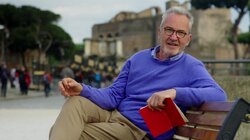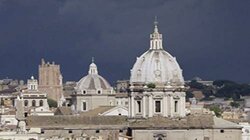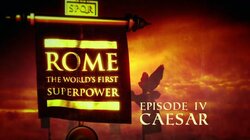Episode I: "City of Blood"
Episode: 1x01 | Airdate: Oct 24, 2014
Larry begins this week in the heart of Rome, surrounded by the festivities as the city celebrates its 2,767th birthday! Amid the carnival atmosphere, he sets out to examine the earliest beginnings of this extraordinary people, revealing how a settlement of mud huts became a kingdom, and then a republic.
In the Circus Maximus, Larry explores the earliest accounts of the city's foundation, discovers the ancient and bloody legend of Romulus and Remus, and searches for the archaeology to back up these myths. Descending into the city's ancient sewers, he finds out how Rome's first leaders turned their village of mud huts into a city of stone – and how thousands laboured to their deaths to build the new city. The enormous foundations of the Temple of Jupiter in the Capitoline Museum reveal the scale of early Rome's ambition.
The republic was born when the greed and corruption of Tarquin the Proud, Rome's seventh king, led to a revolution which brought down the monarchy. The letters SPQR (Senatus Populusque Romanus) can still be found all over the city and date from the time of the republic, but although it was governed in the name of the Senate and People of Rome, when it came to major decisions, Romans still turned to the gods.
At one of ancient Rome's holy sites, Larry finds out how signs from the gods were interpreted. He also visits a huge archaeological dig in the hill country outside the city to uncover how divine blessing finally drove Rome to conquer its nearest neighbour. This monumental victory left Rome poised on the path to Empire.






